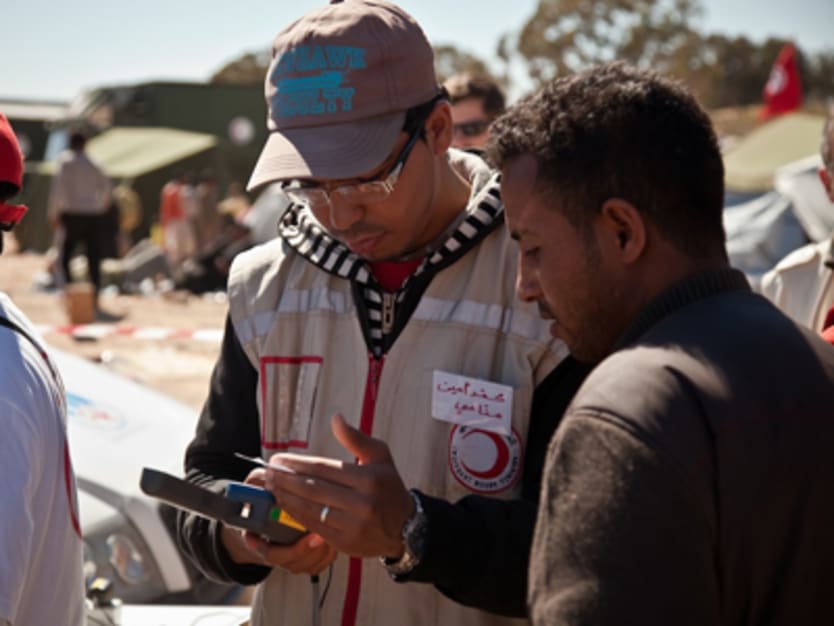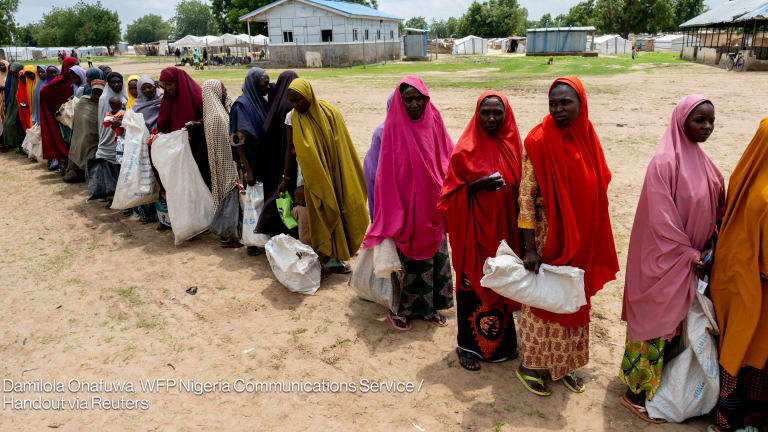
We’ve all heard how aid agencies are supposedly failing to deliver in Haiti, Congo or wherever the latest disaster or war is happening. What if new technology — like social media, drones and artificial intelligence — could put you in charge of delivering aid, direct from your armchair?
Imagine the next disaster. Rather than turning on CNN, we turn to social media to hear directly from those affected. Japanese Twitter accounts generated 2,000 tweets per second after the 2011 earthquake, so what’s to stop people directly soliciting our help this way in the future?
If the need is actual goods, then the “humanitarian drone” offers a range of possibilities, from relief drops to search and rescue. MONUSCO, the United Nations’ peacekeeping mission in the Democratic Republic of the Congo, is already using drones for surveillance.
Deciding who to help is challenging. During Hurricane Sandy, 20 million tweets were posted, but artificial intelligence programs can search through these for us, finding the most important information. Sentiment analysis software can even gauge the emotional state of a nation based on the tone of their social media posts.
It’s not even just traditional aid workers who help in emergencies anymore. Online volunteers, based all over the world, now regularly get called in to manage crisis maps during disasters. After Sandy, the Jointly app hooked up those in need with other local people who had the skills or resources to help them, reducing the need for outside help.
So technology clearly has the power to turn us all into aid workers, but what are the consequences of getting rid of the aid agency middlemen and -women?
The 2013 issue of the International Federation of Red Cross and Red Crescent Societies’ World Disasters Report argues that aid agencies deliver much more than humanitarian aid; they also promote and engage people with humanitarian values. These values — humanity, impartiality and neutrality — ensure aid is delivered in line with strict principles and guidelines. Namely, that aid is about alleviating human suffering and protecting dignity; aid should be based on need, not religion, race or political opinion; and that aid agencies and other actors will not pick sides in a conflict.
So what happens to these values if technology replaces aid agencies? Can a computer make better (ethical) decisions than a human? Can we be accountable to people we’ve never met? Is it right to only speak digitally, when people prefer face-to-face? Does a drone respect privacy? Can an anonymous, digital volunteer be held responsible for their actions?
Social media, in particular, can pose a risk to humanitarian values.
First, there are millions of people who aren’t online — only 31 percent of people in developing countries use the Internet. Just as face-to-face assessments insist aid staff speak to vulnerable groups — children, women, elderly — an assessment of needs based on social media, and consequent decisions on where aid goes, must not ignore those without a digital voice.
Second, social media is vulnerable to manipulation. Anyone, without revealing their identity or motive, can post information, start rumors or flood the system with misinformation. In Syria, both sides are using YouTube to gain support for their cause. In complex situations a “neutrality lens” must be used to assess the information taken from social media.
Third, social media can pose a physical risk to personal safety. When Mexican citizens began tracking drug cartel activity online, they were murdered and their bodies dumped in public places as a warning to others. If we solicit information on social media we must be aware of the wider context and the potential danger people are putting themselves in.
Finally, while people selling their needs on YouTube like a macabre disaster reality show is clearly unethical, social media does help some disasters to get more attention, and that can unfairly influence where funding and support is sent. In a report last year, IFRC found that nine out of 10 disasters they respond to are “silent disasters” that don’t generate headlines, receive donations or trend on Twitter. Last year, a drought in East Africa affected 8 million people — 2 million more than Typhoon Bopha. It might not have made the headlines, but the suffering of those affected was not any less valid or terrible.
So do we turn our back on technology because of the risk to humanitarian values? Or should we embrace it, because of the potential to make aid more open, accountable and effective? The answers lies somewhere in between — what matters is not technology, but how we use it to improve lives. And this improvement will only come if we develop best practice guidelines, rigorously test and evaluate the technology to ensure we adopt the right ones and we put policies in place to mitigate the risks and unintended consequences. As this year’s World Disasters Report states, “the humanitarian imperative ‘do no harm’ does not become any less important in the network age, but more important than ever before.”
How can aid agencies leverage technology to improve humanitarian response to disasters? Join the conversation on Twitter using #WDR2013 or leave a comment below. Join the Devex community and gain access to more in-depth analysis, breaking news and business advice — and a host of other services — on international development, humanitarian aid and global health.








